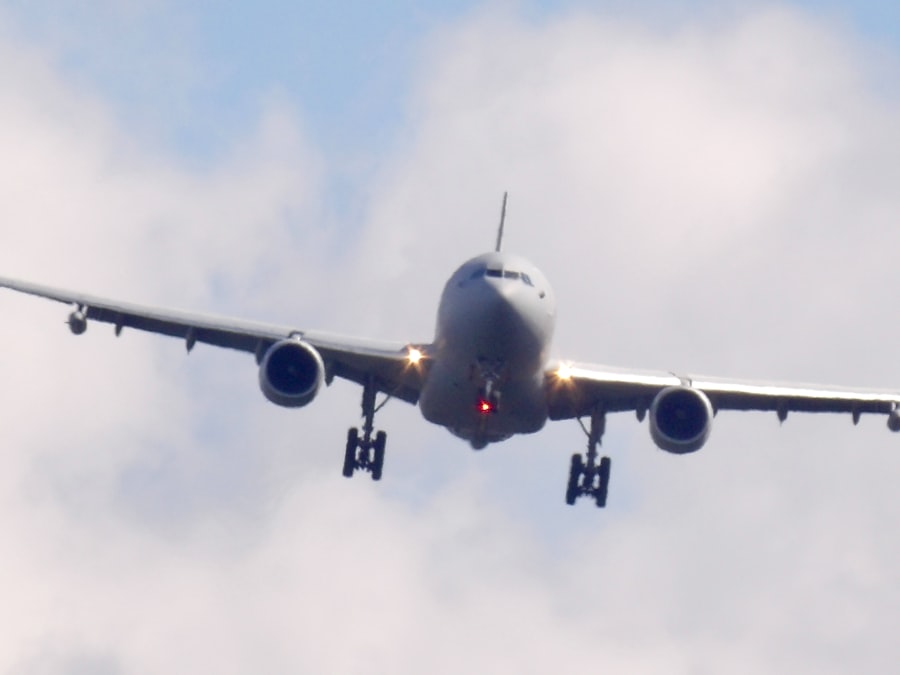The aerospace industry stands at the forefront of technological innovation and economic development, playing a pivotal role in shaping global connectivity and advancing human exploration. As we navigate through the complexities of the 21st century, the aerospace sector is not only expanding its horizons but also redefining its operational paradigms. The convergence of various disciplines, including engineering, computer science, and environmental science, has catalyzed a wave of advancements that promise to revolutionize air travel and space exploration.
This dynamic landscape is characterized by a relentless pursuit of efficiency, safety, and sustainability, driven by both market demands and regulatory pressures. In recent years, the aerospace business has witnessed a surge in investment and interest from both established players and new entrants. The rise of startups focusing on niche markets, such as urban air mobility and satellite technology, has injected fresh ideas and competition into the industry.
Furthermore, traditional aerospace giants are increasingly collaborating with tech companies to leverage cutting-edge innovations. This collaborative spirit is essential for addressing the multifaceted challenges that the industry faces, including rising operational costs, environmental concerns, and the need for enhanced passenger experiences. As we delve deeper into the various facets of this evolving sector, it becomes evident that the future of aerospace is not just about flying higher or faster; it is about creating a more interconnected and sustainable world.
Key Takeaways
- Aerospace business is a rapidly advancing industry with a focus on emerging technologies, sustainable aviation, artificial intelligence, space tourism, aircraft design, and global collaboration.
- Emerging technologies such as electric propulsion, advanced materials, and autonomous systems are revolutionizing the aerospace industry and driving innovation.
- Sustainable aviation is a key consideration for the industry, with a focus on reducing carbon emissions, noise pollution, and environmental impact.
- Artificial intelligence is playing a crucial role in aerospace business, from autonomous flight systems to predictive maintenance and operational efficiency.
- The future of space tourism is becoming a reality, with advancements in technology and increasing interest from private companies and governments.
Emerging Technologies in Aerospace Industry
The aerospace industry is undergoing a technological renaissance, with emerging technologies reshaping how aircraft are designed, manufactured, and operated. One of the most significant advancements is the integration of additive manufacturing, commonly known as 3D printing. This technology allows for the production of complex components with reduced waste and shorter lead times.
For instance, companies like Boeing and Airbus are utilizing 3D printing to create lightweight parts that enhance fuel efficiency while maintaining structural integrity. The ability to produce components on-demand also reduces inventory costs and enables rapid prototyping, fostering innovation in design. Another transformative technology making waves in aerospace is the Internet of Things (IoT).
By embedding sensors in aircraft systems, manufacturers can collect real-time data on performance and maintenance needs. This data-driven approach not only enhances operational efficiency but also improves safety by enabling predictive maintenance. For example, airlines can monitor engine health continuously, allowing them to address potential issues before they escalate into costly failures.
The integration of IoT with big data analytics provides a comprehensive view of aircraft operations, leading to informed decision-making that optimizes performance and reduces downtime.
Sustainable Aviation: Environmental Considerations

As global awareness of climate change intensifies, the aerospace industry faces increasing scrutiny regarding its environmental impact. The quest for sustainable aviation has become a central theme in industry discussions, prompting stakeholders to explore innovative solutions that minimize carbon emissions and reduce noise pollution. One promising avenue is the development of sustainable aviation fuels (SAFs), which are derived from renewable resources such as plant materials or waste products.
These fuels can significantly lower lifecycle greenhouse gas emissions compared to traditional jet fuels. Airlines like KLM and United Airlines have already begun incorporating SAFs into their operations, signaling a commitment to greener practices. In addition to alternative fuels, advancements in aircraft design are contributing to sustainability efforts.
The introduction of more aerodynamic shapes and lightweight materials can lead to substantial reductions in fuel consumption. For instance, the Boeing 787 Dreamliner utilizes composite materials that not only reduce weight but also enhance fuel efficiency by up to 20% compared to older models. Furthermore, electric and hybrid-electric propulsion systems are gaining traction as viable alternatives for short-haul flights.
Companies like magniX are developing electric engines that could revolutionize regional air travel by offering a cleaner, quieter alternative to conventional aircraft.
The Role of Artificial Intelligence in Aerospace Business
| Metrics | Data |
|---|---|
| Cost Reduction | AI can reduce operational costs by optimizing maintenance schedules and fuel consumption. |
| Efficiency Improvement | AI can improve flight route planning and air traffic management, leading to more efficient operations. |
| Safety Enhancement | AI can analyze vast amounts of data to identify potential safety risks and improve overall safety in aerospace business. |
| Customer Experience | AI can personalize customer experiences, from booking flights to in-flight services, leading to higher satisfaction. |
| Environmental Impact | AI can help optimize aircraft design and operations to reduce environmental impact and carbon emissions. |
Artificial intelligence (AI) is rapidly becoming an integral part of the aerospace business landscape, influencing everything from design processes to operational efficiency. AI algorithms can analyze vast amounts of data at unprecedented speeds, enabling engineers to optimize designs based on performance simulations rather than relying solely on traditional testing methods. For example, Airbus has implemented AI-driven design tools that allow engineers to explore thousands of design variations quickly, identifying optimal configurations that enhance performance while reducing costs.
Moreover, AI plays a crucial role in enhancing safety and operational efficiency through advanced analytics and automation. Airlines are increasingly employing AI-powered systems for flight scheduling, crew management, and predictive maintenance. By analyzing historical data and real-time conditions, these systems can optimize flight routes to minimize delays and fuel consumption.
Additionally, AI-driven chatbots are improving customer service by providing passengers with instant responses to inquiries about flight status or baggage handling. This integration of AI not only streamlines operations but also enhances the overall passenger experience.
The Future of Space Tourism
Space tourism represents one of the most exciting frontiers in the aerospace business, capturing the imagination of adventure seekers and investors alike. Companies like SpaceX, Blue Origin, and Virgin Galactic are pioneering efforts to make space travel accessible to civilians. The successful launch of suborbital flights by Blue Origin’s New Shepard and Virgin Galactic’s VSS Unity has demonstrated the feasibility of commercial space tourism.
These ventures not only offer breathtaking views of Earth from space but also pave the way for future developments in orbital tourism. The potential for space tourism extends beyond mere leisure travel; it encompasses scientific research and technological advancements as well. As more private companies enter the market, there is an opportunity for collaboration between commercial entities and governmental space agencies.
For instance, NASA has partnered with private companies to facilitate research missions aboard commercial spacecraft. This collaboration could lead to breakthroughs in areas such as microgravity research and space habitation technologies. As the industry matures, we may witness a new era where space tourism becomes a catalyst for innovation across multiple sectors.
Advancements in Aircraft Design and Manufacturing

The design and manufacturing processes within the aerospace industry are undergoing significant transformations driven by technological advancements and changing market demands. One notable trend is the shift towards modular design principles that allow for greater flexibility in aircraft production. By adopting modular designs, manufacturers can streamline assembly processes and reduce production times while maintaining high levels of customization for different airline requirements.
Additionally, advancements in simulation technologies have revolutionized the way aircraft are tested before they take to the skies. Virtual reality (VR) and augmented reality (AR) tools enable engineers to visualize complex systems in three dimensions, facilitating better understanding and collaboration during the design phase. For example, Boeing has utilized AR technology in its assembly lines to assist technicians in accurately installing components by overlaying digital instructions onto physical parts.
This not only enhances precision but also reduces errors during manufacturing.
Global Collaboration in Aerospace Innovation
The aerospace industry thrives on collaboration across borders and sectors, as innovation often emerges from diverse perspectives and expertise. International partnerships between governments, research institutions, and private companies are essential for addressing global challenges such as climate change and air traffic management. Initiatives like the Clean Sky program in Europe exemplify this collaborative spirit by bringing together stakeholders from various countries to develop environmentally friendly aviation technologies.
Moreover, global collaboration extends beyond research and development; it encompasses supply chain management as well. The aerospace supply chain is intricate and often spans multiple continents. Companies are increasingly leveraging digital platforms to enhance transparency and efficiency within their supply chains.
For instance, blockchain technology is being explored as a means to track components from production through delivery, ensuring quality control and compliance with regulatory standards. This interconnectedness fosters resilience within the industry while promoting innovation through shared knowledge.
The Impact of Aerospace Business on Economic Growth
The aerospace business significantly contributes to economic growth on both local and global scales. It generates millions of jobs directly within manufacturing, engineering, and support services while also creating indirect employment opportunities across various sectors such as tourism and logistics. According to a report by the Aerospace Industries Association (AIA), the U.S.
aerospace sector alone supports over 2 million jobs and contributes approximately $250 billion to the economy annually. Furthermore, advancements in aerospace technology often have ripple effects across other industries. Innovations developed for aviation can lead to breakthroughs in sectors such as automotive engineering, telecommunications, and even healthcare.
For example, materials developed for aircraft construction have found applications in medical devices due to their lightweight yet durable properties. As countries invest in their aerospace capabilities, they not only enhance their technological prowess but also position themselves as leaders in a rapidly evolving global economy. In conclusion, the advancing aerospace business is characterized by a confluence of emerging technologies, sustainability initiatives, artificial intelligence integration, space tourism prospects, innovative design practices, global collaboration efforts, and significant economic contributions.
As we look ahead, it is clear that this dynamic industry will continue to evolve, shaping our world in ways we have yet to fully comprehend while addressing some of humanity’s most pressing challenges.


